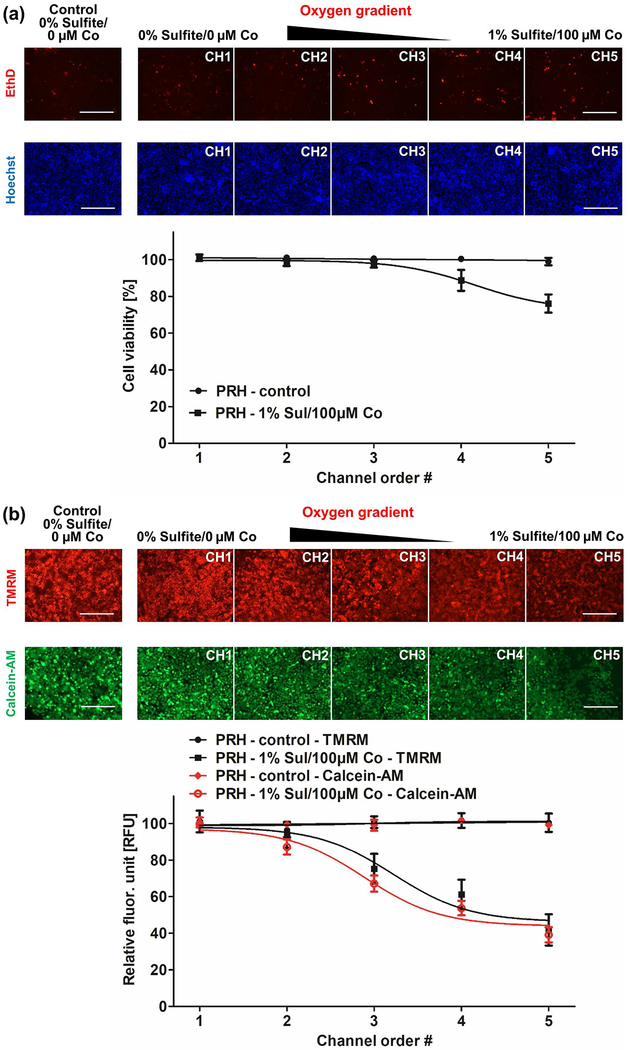Figure 4.
Cell viability of primary rat hepatocytes in the MPOC device. Hepatocytes cultured in the MPOC device were exposed to an oxygen gradient created by 0% sulfite/0 μM cobalt and 1% sulfite/100 μM cobalt for 2 hours. Control groups consisted of cells perfused with DMEM media only. Afterward, cells were stained with (a) EthD and Hoechst to assess cell viability. The cell viability of hepatocytes was decreased to approximately 80% along the hypoxia gradient across the width of the device, while hepatocytes in the control group (perfused with oxygen-dissolved DMEM media) remained viable. Image quantification was performed via ImageJ software. All data met p < 0.05 except that control vs channels 1, 2 and 3; channel 1 vs channels 2, 3 and 4; channel 2 vs channels 3 and 4; channel 3 vs channel 4; and channel 4 vs channel 5 are not significant (one way ANOVA n=5, Tukey’s test). Scale bar: 400 μm. (b) TMRM and calcein staining. The metabolic activity was decreased along the hypoxia gradient. Image quantification was performed with ImageJ software. For the TMRM staining, all data met p < 0.05 except that control vs channels 1, 2 and 3; channel 1 vs channels 2 and 3; channel 2 vs channel 3; channel 3 vs channel 4; and channel 4 vs channel 5 are not significant (one way ANOVA n=6, Tukey’s test). For the calcein staining, all data met p < 0.05 except that control vs channels 1 and 2; channel 1 vs channel 2; channel 3 vs channel 4; and channel 4 vs channel 5 are not significant (one way ANOVA n=6, Tukey’s test). Scale bar: 400 μm.

